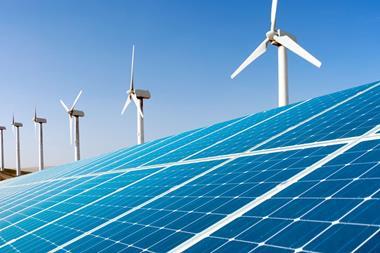The world is on course for a long-term temperature rise of 4°C, rather than the 2°C maximum target set by the Paris agreement on climate change, according to analysis from Schroders.
However, it said the gap between action and rhetoric on fighting climate change is closing and that investors need to be prepared for changes to investment valuations as a result of this.
“At some point, we expect markets to recognise this new momentum and to reassess valuations for a much more aggressive pace of decarbonisation in the future,” it said.
“Investors who are unprepared or who have relied on overly simplistic analysis risk losses and missed opportunities.”
The asset manager’s view was based on an assessment of 12 indicators – which it called the Climate Progress Dashboard – that it identified as the key reasons for and controls of climate change, spanning politics, business, technological progress, and energy.
Andy Howard, head of sustainable research at Schroders, said the dashboard “provides an objective and transparent view of change and should help investors base decisions on the outcomes we are likely to see, rather than those we would like to see”.
The asset manager said investors’ focus “on what should happen, rather than what is happening, has become increasingly untenable as momentum builds and potential risks crystallise in the form of real financial impacts”.
It described investors as having relied more on “anecdotes and headlines” than objective analysis to gauge progress on limiting global warming. Investors have been faced with “a confusing, changeable and often contradictory range of climate signals”, Schroders said.
The dashboard was intended to help them cut through these signals to develop an all-round view of where things stand and how they may change.
Having such a view was becoming more important “as activity picks up and rhetoric becomes action”, the asset manager said.
The 12 indicators that Schroders identified are: political ambition, public concern, political action, corporate planning, climate finance, carbon prices, electric vehicles, renewable capacity, carbon capture and storage, oil and gas investment, coal production, and oil and gas production.
Developments in each of the areas captured by the indicators pointed to temperatures rising above 2°C, although the implied outcomes vary across the indicators.
Global political action, for example, pointed to a 3.6°C temperature rise, while current oil and gas production levels are consistent with a temperature rise of 5.8°C, according to Schroders’ analysis.
The outlook was brightest for political ambition, although this would also fall short of the 2°C target, according to Schroders.
Looking at individual countries’ targets to contain greenhouse gas emissions, the manager said these suggested a temperature rise of 2.8°C.
The dashboard can be found here.








